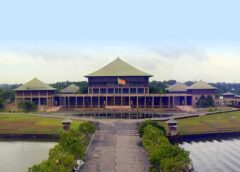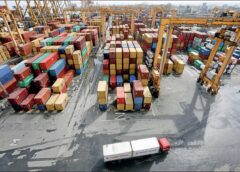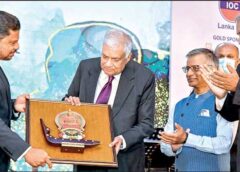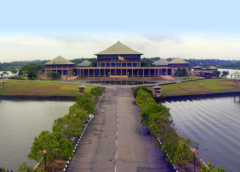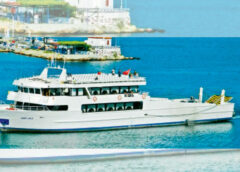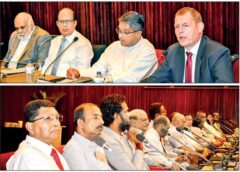Abolition of time-tested Exchange Control Act Only 18 opposed it and 113 skipped vote By Shamindra Ferdinando Amidst allegations that the abolition of the time-tested Exchange Control Act of 1953 contributed to the country’s bankruptcy and foreign exchange crisis, The Island, in terms of the Right to Information Act No 12 of 2016 requested from the Office of Secretary General of Parliament, the names of the MPs who had voted for the new law (Foreign Exchange Act No 12 of 2017) and those who opposed it. According to parliamentary records, 94…
Read MoreCategory: News
July exports decline by 12% YoY to $ 1 b
July exports decline by 12% YoY to $ 1 b Cumulative earnings in first seven months down by 10.26% to $ 6.89 b Apparel and textiles, rubber and rubber-based products, coconut and coconut-based products drop due to sluggish demand Services exports in January-July up by 17.32% to $ 1.22 b Exports to major markets US and EU plunge Sri Lanka’s export sector in July managed to sustain over $ 1 billion performance compared to June 2023, though on a year-on-year (YoY) basis, it fell by 12% due to sluggish demand…
Read MoreRanil, Modi unveil new Indo-Lanka economic partnership vision
Ranil, Modi unveil new Indo-Lanka economic partnership vision Following historic meeting in New Delhi, announce series of measures to catalyse prosperity via promotion of greater cooperation and connectivity in areas of maritime, air, energy and power; trade, economic and financial services and people-to-people Agree to undertake discussions on Economic and Technology Cooperation Agreement with an aim to comprehensively enhance bilateral trade and investments in new and priority areas To undertake mutually agreed joint exploration and production of hydrocarbons in Sri Lanka’s offshore basins with an aim to develop Sri Lanka’s…
Read MoreIndia and SL must forge together long term: President
India and SL must forge together long term: President In keynote at Indian CEO Forum’s annual fellowship banquet Wickremesinghe says together, India and Sri Lanka possess immense potential Ahead of visit to India and meeting with Modi next week President moots long-term relationship between the two nations must transcend individual leaders or political parties Stresses relationship between India and SL not solely driven by governments but by people who are moving forward at a rapid pace President Ranil Wickremesinghe on Thursday said both India and Sri Lanka should forge together…
Read More‘Presidential control over DDO undermines power of Parliament’
‘Presidential control over DDO undermines power of Parliament’ By Shamindra Ferdinando Dissident SLPP MP Gevindu Cumaratunga has strongly opposed the government move to place the debt-restructuring programme under President Ranil Wickremesinghe’s control as the latter does not represent Parliament. Addressing Parliament on Saturday (01), the leader of civil society group ‘Yuthukama’ pointed out that the Resolution on the Domestic Debt Optimisation (DDO) was meant to bring the whole process under Finance Minister Wickremesinghe’s power. How could Parliament grant such authority to a person not among elected or appointed members of the current…
Read MorePAFFREL calls for Private Member Bill on LG bodies to be defeated
PAFFREL calls for Private Member Bill on LG bodies to be defeated .Says the bill is a death blow to the sovereignty of the people and democracy Claims bill does not specify for how long a Minister will be able to reactivate LG bodies Stresses governments could misuse the law to not hold elections when unfavourable Independent election monitors, People’s Action for Free and Fair Elections (PAFFREL) yesterday called for the recently gazetted Private Member’s Bill presented by Sri Lanka Podujana Peramuna (SLPP) MP Jayantha Ketagoda to be defeated. According…
Read MoreParliament unplugs powerful regulator
Resolution for ouster of Public Utilities Commission Chairman receives 123 votes in favour and 77 votes against in Parliament Janaka Ratnayake says ouster not defeat but loss for people and MPs who voted for it Opines vote exposed MPs acting on baseless allegations to oust Chairman of independent commission who put people’s interest first and challenged unfair actions by Govt. President Wickremesinghe’s Government has increased electricity tariffs by 1200% in August last year and by 275% in February 2023 Power and Energy Minister Kanchana Wijesekera charged politically motivated Ratnayake’s actions…
Read MoreRestoring Ferry Service Will Rewrite History of India-Lanka Ties
Restoring Ferry Service Will Rewrite History of India-Lanka Ties The ferry service between India and Sri Lanka, as well as railway connections, have all but vanished since the turn of the 19th and the 20th centuries, and the use of a comfortable Singaporean passenger vessel ‘IndSri‘ to sail between Karikkal (KKL)Port in South India and Kankesanthurai (KKS) Port in Sri Lanka’s Northern Province next month (Mid-May), will rewrite the history of sea connections between Indo-Sri Lanka. There was formerly a regular ferry service between India and Sri Lanka that served…
Read MoreNorthern Province, ILO and EY collaborate to advance private sector investments
Northern Province, ILO and EY collaborate to advance private sector investments The Northern Province Governor’s Office, International Labour Organisation (ILO) and Ernst & Young (EY) collaborated to organise stakeholder meetings on generating investment-driven growth in the Northern Province. These meetings focused on the agriculture, animal husbandry, fisheries/aquaculture, apparel, food processing, and tourism sectors and were attended by private and public sector representatives relating to these sectors. The Northern Province has extensive, but largely underutilised, resources that are very favourable for agriculture, animal husbandry, fisheries/aquaculture, and food processing activities and is…
Read MoreLazard intensively evaluates State Banks asset quality
Lazard intensively evaluates State Banks asset quality The Lazard Sovereign Advisory Group, which serves as a financial adviser to Sri Lanka’s debt restructuring programme, has undertaken an intense examination into the best way to approach State Banks for the local debt restructuring programme, a senior government official told Finance Today. According to official sources, Lazard is currently undertaking an in-depth study to determine how participation in domestic debt restructuring programme will affect the overall quality of assets held by each State Bank. “In addition to the ongoing banking sector asset…
Read More